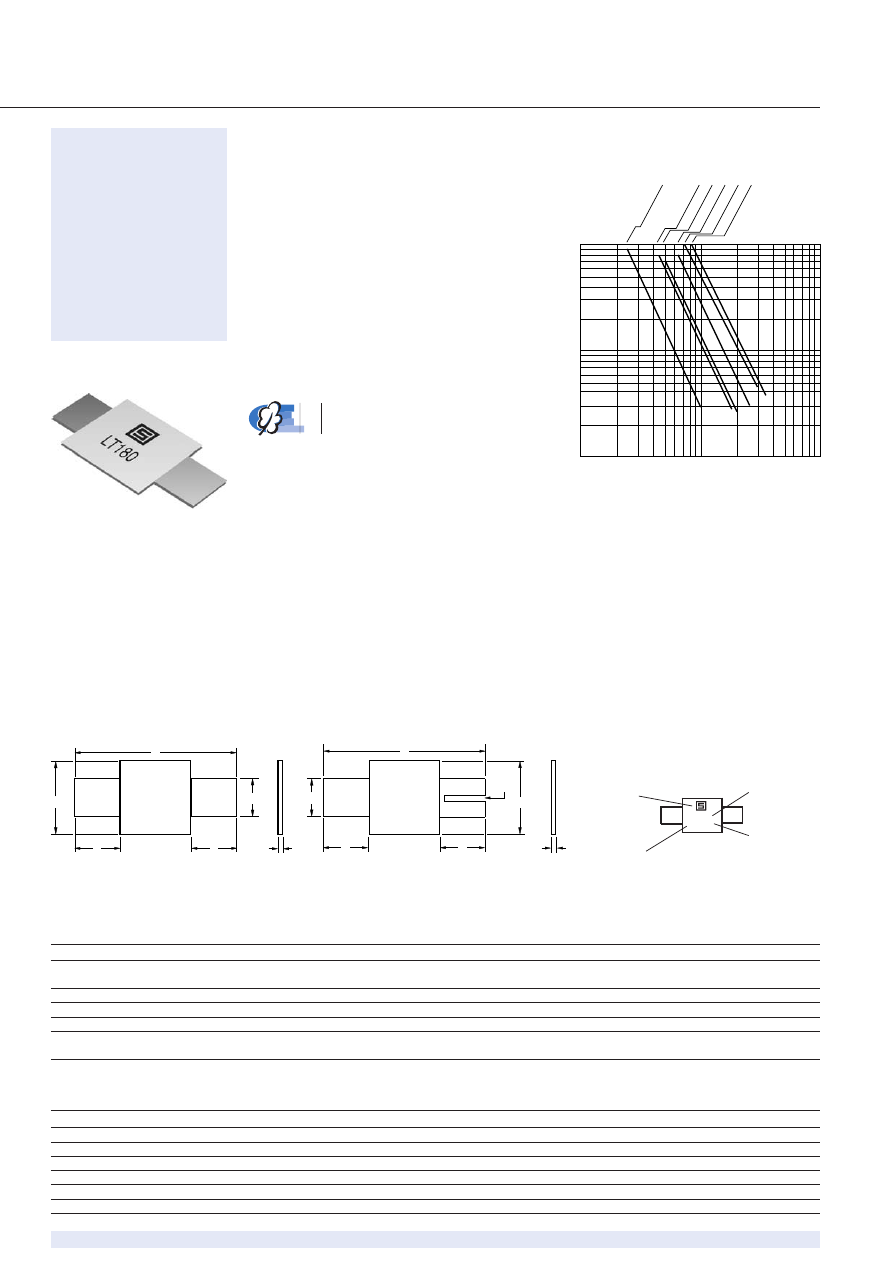
FUSES
/ SICHERUNGEN
PFLT
Resettable fuses
www.schurter.com
34
Axial leaded
PTC-Fuses
Type PFLT
Fully compatible with cur-
rent industry standards
Weldable nickel terminals
Very low internal resistance
Agency recognition:
UL, CSA, TÜV (pending)
Typical Time to Trip at 23 ˚C
0.001
1
10
100
1
10
p
PFL
T.100.S
PFL
T.180
PFL
T.190
PFL
T.260
PFL
T.300
PFL
T.340
Fault current
(A)
Test Procedures And Requirements For Model PFLT Series
Test
/ Test
Test Conditions
/ Bedingungen
Accept/Reject Criteria
Visual/Mech.
/ visuell/mech.
Verify dimensions and materials
/ Kontrolle Abmess./Mat.
Per PF physical description
Resistance
/ Widerstand
In still air @ 23 °C
/ bei ruhiger Luft
R
min
≤
R
≤
R
max
Time to Trip
/ Trip-Zeit
5 times I
hold
, V
max
, 23 °C
/ 5xHaltestrom, V
max
, 23 °C
T
≤
max.
time to trip
(sec.
)
Hold Current
/ Haltestrom
30 min. at I
hold
/ bei Haltestrom
No trip
Trip Cycle Life
/ Trip-Zyklen
V
max
, I
max
, 100 cycles
/ Zyklen
No arcing or burning
Trip Endurance
/ Zeit im Tripzustand
V
max
, 48 hours
/ Stunden
No arcing or burning
Environmental Characteristics
Operating/Storage Temperature
/ Einsatz/Lagertemp.
–40 °C
to
+85 °C
Maximum Device Surface Temperature in Tripped State
/
125 °C
Passive Aging
/ passive Alterung
+85 °C, 1000
hours
/ Std.
±5%
typ. resist. change
Humidity Aging
/ Feuchtigkeitsalterung
+85 °C, 85% R.H. 1000
hours
/ Std.
±5%
typ. resist. change
Thermal Shock
/*) Thermischer Schock
+85 °C/–40 °C 10
times
/ Zyklen
±10%
typ. resist. change
Vibration
MIL-STD-883C, Method 2007.1,
No change
Condition
A
*) MIL-STD-202F, Method 107G
Applications
Any application that requires
extra protection at elevated am-
bient temperatures, which the
100 °C trip temperature provides,
including rechargeable battery
pack protection,cellular phones,
laptop computers
F
B
D
D
A
C
Typical Part Marking
Layout may vary
Manufacturer’s
Trademark
Part identification
Date Code (Last
Digit of Year and
Julian Date)
Lot No (T=Taiwan)
LT180
7144T
F
B
SLIT
0.5 x 4.0
NOM.
D
D
A
C
Standard Style
/ Standard-Ausführung
“S” Style
/ «S»-Ausführung
Time to trip
(s)
50 75 100